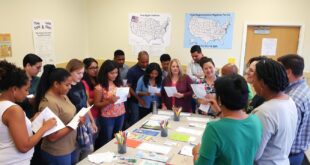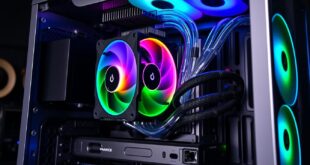Have you ever thought about how the U.S. court systems work? From local district courts to the national Supreme Court, they have a big job. They interpret laws, settle disagreements, and make sure justice is fair. But do we get how these courts’ complex rules and roles fit together? In this detailed guide, we’ll dive into the U.S. court system, exploring federal and state courts, the roles of judges and juries, and more across all 50 states.
The federal court system has three major levels: district courts1 for general cases, circuit courts1 for appeals, and the U.S. Supreme Court2 as the final say. There are 94 district courts12 and 13 circuit courts12 nationwide. They’re separate from the government’s other branches but often work together. These courts are crucial for making decisions on all types of cases.
Each state also has its own courts, set up by state laws. These include trial, appeal, and state supreme courts. They handle laws that apply just to that state. Cases might be decided by federal or state courts, which can make things tricky for those involved.
We need to know about judges and juries to understand our courts. Judges make sure trials are fair and decide cases. Juries listen to evidence and decide the facts. Both are key to making our court system work right.
This guide will go over how the U.S. court system is set up. It will look at federal and state courts, their jobs, and how they work. Understanding our legal system helps us know our rights and how to get legal help when we need it.
Key Takeaways
- The American judicial system consists of federal and state court systems, each with its own structure and jurisdiction.
- The federal court system has three main levels: district courts, circuit courts of appeal, and the Supreme Court of the United States.
- State court systems typically include trial courts, appellate courts, and a state supreme court, with varying structures and procedures across the 50 states.
- Judges play a crucial role in overseeing trials, interpreting laws, and rendering impartial decisions, while juries serve as the triers of fact.
- The American judicial system also includes specialized courts and tribunals, such as bankruptcy courts, tax courts, and military courts, to handle specific types of cases.
Introduction to the American Judicial System
The American judicial system has both federal and state courts. Each has its own way of doing things. The federal system is based on the U.S. Constitution’s Article III.3 State systems follow their own state laws. These courts all work together to make sure laws are used fairly and to solve problems.3
In the federal system, there are 13 circuits and 94 district courts.1 It is organized into three levels: District Courts, Circuit Courts of Appeals, and the Supreme Court. This top court is where the final decisions are made.3 Many state systems are set up the same way as the federal system.3
This summary explains the main parts and roles of the American judicial system. It includes both federal and state court structures. It also mentions the types of cases they hear and the special courts they have.213
Federal Court System Overview
The federal court system has three key levels: district courts, circuit courts of appeal, and the Supreme Court of the United States.1 The first level includes 94 district courts, where cases are first heard. They deal with both civil and criminal issues.1 Every district court is led by at least one U.S. District Judge. These judges are chosen by the President and approved by the Senate. They serve for life.2
District Courts
The 94 district courts are the starting points for most federal cases, covering civil and criminal law matters.1 Each one has a U.S. District Judge. These judges are appointed by the President and confirmed by the Senate. They hold their positions for life.2
Circuit Courts
The next level is made up of 13 circuit courts of appeals. They review cases from the district courts and federal agencies’ decisions.1 Circuit court judges are chosen in a similar way to district judges. They are appointed by the President and must be confirmed by the Senate.2 Across the U.S., there are twelve federal circuit courts. The number of judges in each varies, stretching from six to twenty-nine. These judges also serve for life.2
Supreme Court of the United States
At the highest level sits the Supreme Court. It can review any case from federal or state courts that involve federal laws.1 There are nine Supreme Court Justices, including a Chief Justice, who are selected by the President and confirmed by the Senate. Justices stay in their roles for life.2 The Supreme Court only agrees to hear less than 1% of the cases it’s asked to review. Its session typically goes from October to June the following year.2

State Court Systems
Each state in the U.S. has its own court system. It is set up by state laws and constitutions.4 Their system has trial, appellate, and supreme courts. Trial courts, like circuit or district courts, start with cases, civil or criminal. Appellate courts then check on the trial court’s decisions. Finally, the state supreme court makes the last call on state laws and constitutions. Every state’s court system works a bit differently. But they all have a key role in making sure justice is done at the state level.
Trial Courts
The base of state courts is the trial courts. They have first looks at many civil and criminal cases. These are the circuit or district courts. They find facts and apply state laws to make decisions.4 Trial judges in state courts might get elected or picked for a certain time, or for life. It depends on the state’s rules.
Appellate Courts
After trial courts, there are the appellate courts. They review decisions from the lower courts. State appellate courts deal with appeals from the trial courts. They can change or confirm these decisions.4 Each state’s highest court for appeals is its supreme court. This court makes the final decisions about state laws and the constitution.
State Supreme Courts
Each state’s highest court is the state supreme court. It has the main say on the state’s laws and constitution.4 The state supreme court has a chief justice and several associate justices. They might get picked or elected, depending on the state. This court hears appeals from the lower courts. It can make decisions that all state courts must follow.
Jurisdiction of Federal and State Courts
Federal courts and state courts have their own areas of legal power. This means they can hear different kinds of cases.4 Federal courts deal with cases related to federal laws, the U.S. Constitution, and more. They handle issues like whether a federal law is constitutional or not, bankruptcy, and cases involving citizens of different states. This is also where admiralty law and habeas corpus cases go.4 On the flip side, state courts focus more on crimes happening within the state and certain civil matters. They look into contract issues, injuries, and cases about family law.
Federal Court Jurisdiction
4 The Federal Court System is in charge of checking if laws are in line with the U.S. Constitution. It also deals with disputes between states, bankruptcy, and more.2 The system includes 94 district courts, 13 circuit courts, and the United States Supreme Court.
State Court Jurisdiction
4 As for state courts, they handle various cases, including criminal ones and family law disputes. They are critical in interpreting and applying state laws and constitutions.4 Choosing how to appoint judges for these courts can happen in several ways. This can be through direct voting, appointments for fixed terms, lifelong appointments, or mixes of these methods.
Sometimes, a case might fit into both federal and state courts’ jurisdictions. In these situations, the plaintiff can decide where to file, be it the federal or state level. Yet, only the federal court system can prosecute cases involving federal crimes. Likewise, state courts can only handle cases based on state law.
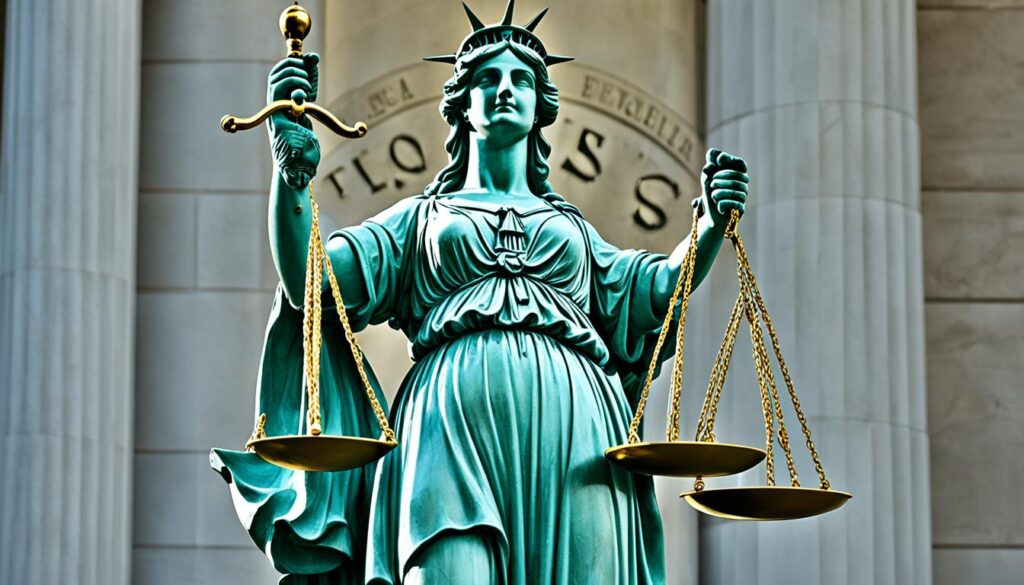
Roles and Responsibilities of Judges
Judges are key players in our legal system. They oversee trials and apply laws, ensuring justice. The President appoints federal judges, including those on the Supreme Court, and the Senate confirms them. They serve for life. In contrast, state judges get their roles through elections or appointments for limited terms.2
Both federal and state judges must meet high standards to keep their jobs. Known as “good behavior,” they must conduct their duties ethically. If they violate these standards, they can face impeachment, which means removing them from office. Besides hearing and deciding cases, judges manage their courts, guide court workers, and ensure justice for all while staying independent.2
| Federal Judges | State Judges |
|---|---|
| Appointed by the President and confirmed by the Senate for lifetime terms2 | Selected through various methods, such as election, appointment, or a combination2 |
| Responsible for overseeing trials, interpreting laws, and rendering decisions1 | Responsible for overseeing trials, interpreting laws, and rendering decisions1 |
| Must maintain “good behavior” to retain their positions and can be removed through impeachment2 | Must maintain “good behavior” to retain their positions and can be removed through impeachment2 |
| Manage their courts, supervise court staff, and ensure the fair and impartial administration of justice1 | Manage their courts, supervise court staff, and ensure the fair and impartial administration of justice1 |
In America, judges are free to decide as they see fit, without pressure from the government or others. This independence protects everyone’s legal rights and ensures that the law is followed.
Jury Duties and Selection Process
In America, the jury is very important. It decides the facts in court cases. These can be about things like money disputes or crimes. The jury selection process starts with the court calling people to be potential jurors. These people are asked questions by the judge and lawyers to see if they’re right for the case.5
Jury Selection
In civil cases, juries decide the facts and, if needed, the money to be paid.6 In criminal cases, they must rule if the person is guilty or not. This is a big decision, so they have to be very sure. The judge helps them understand the law. But it’s their job to look at the facts and decide without any other reasons.6
Jury Responsibilities
Serving on a jury is part of being a good citizen in the U.S.65 You might only have to do this once every two years by law.6 The time you might serve on a jury can vary, but your job has to let you go. They can’t punish you for doing jury duty.6 If you are not well or have a hard time serving, a judge can excuse you.6
| Jury Compensation in Utah | Jury Compensation in Other States |
|---|---|
In Utah, jurors get paid more than other places. If it’s a crime case, everyone must agree the person is guilty. In civil cases, most of the jurors have to think the same way. Sometimes, juries might not need to stay together during the trial in Utah.6
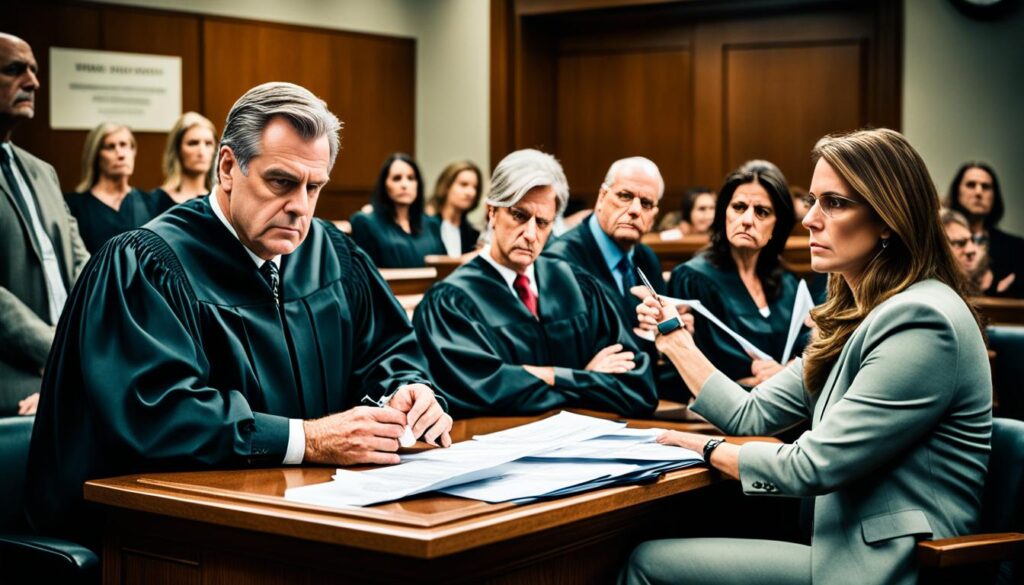
Litigation Processes in Federal and State Courts
The way court cases work can be different between civil and criminal ones. Also, there’s a gap in how things go in federal and state court systems. In civil litigation, a plaintiff sues a defendant for a rights violation or missing a legal duty. This legal fight moves through steps like complaints, discovery, and possibly a trial. All these are managed either by a jury or a judge.4
Civil Litigation
The civil litigation process kicks off with the plaintiff filing a complaint. This states what the defendant did wrong and asks for a fix. The accused then gets to defend themselves, which starts a series of legal back-and-forths and evidence sharing. If a settlement isn’t reached, the matter might end up in court. There, a decision is made by a single judge or a jury. The end result could see the winning side get money, a court order, or other types of relief.
Criminal Litigation
Criminal cases are different since it’s the government that starts them. It could happen at the federal or state level. These cases focus on proving someone broke the criminal law. The criminal process can include charging the accused, bail issues, and negotiations. If no agreement is found, a trial is next. Here, a judge or jury listens to the case details and decides on guilt. In a criminal case, the government has to show the defendant is guilty without a doubt.
While there are differences, the litigation processes in both federal and state courts aim to ensure the fair and efficient resolution of disputes, upholding the principles of due process and the rule of law.
american judicial system guide to all states
This guide gives a full view of the American court system. It looks at both federal and state courts, their structures, and how they work in all 50 states.1 The federal system has 94 district courts, 13 appeals courts, and the U.S. Supreme Court.2 Each state has its own set of courts, including trial and appeals courts, and a state supreme court.4
It covers the kinds of cases heard in these courts, the job of judges, how juries are picked, and what they do. And, how both civil and criminal cases move through the court system.1 Also, it looks at special courts, ways to solve problems without going to court, how technology is changing law, and how judges must behave.2 Knowing about the legal system helps people and companies handle their legal issues better.
| Key Facts about the American Judicial System |
|---|
| There are 94 district level trial courts in the federal court system.1 |
| The American federal court system comprises 94 district courts, 13 circuit courts, and one Supreme Court.2 |
| The U.S. has 94 U.S. District Courts.4 |
| There are 13 U.S. Courts of Appeals established by Congress.4 |
| The U.S. Supreme Court is the highest court in the United States.1 |
| The Supreme Court of the United States consists of nine justices – eight associate justices and one chief justice.2 |
| Federal judges are nominated by the President and confirmed by the Senate, holding office typically for life.4 |
| State court judges can be selected through election, appointment for a given number of years, appointment for life, or combinations of these methods.4 |
Understanding how the American legal system works can make dealing with legal matters easier for everyone.
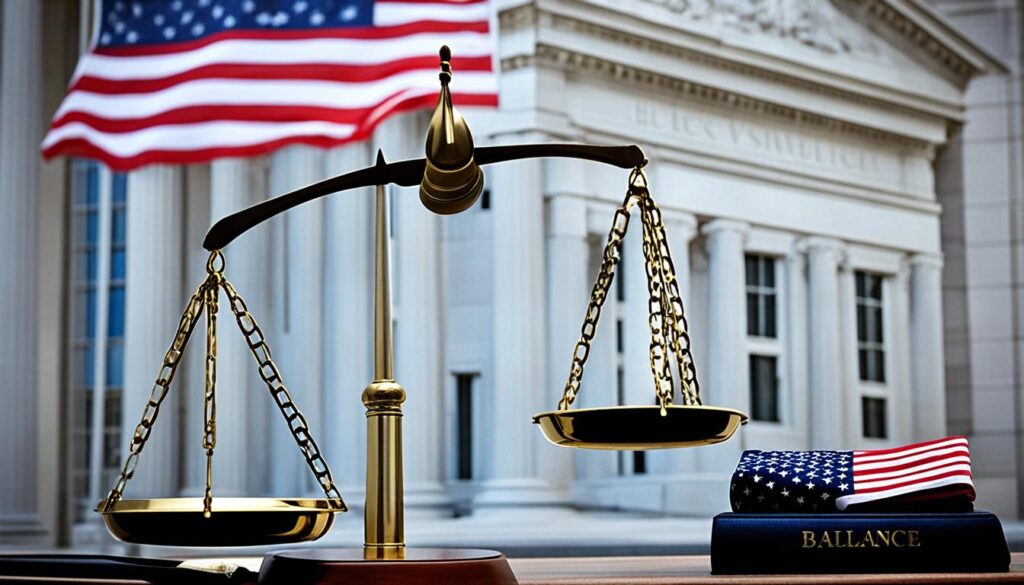
Court Procedures and Rules
The American judicial system follows specific rules and procedures to guarantee fair and smooth justice.7 The federal system uses the Federal Rules of Evidence and Civil and Criminal Procedures for its trials.7 Each state has its unique set of rules for cases in its courts, covering evidence, procedures, and criminal laws.7 These guidelines decide what evidence is allowed, when to file motions, and how jury selection works.7 Judges make sure these rules are followed to protect everyone’s rights.
Rules of Evidence
rules of evidence say what info can enter a courtroom and how. They focus on using reliable and fair evidence to decide cases. Judges decide if evidence is okay and show juries how to use it fairly.
Rules of Civil Procedure
rules of civil procedure detail how to file and resolve civil suits. They include starting a lawsuit, sharing info with the other party, setting court dates, and proving your case. Following these rules helps disputes end fairly and without delay.
Rules of Criminal Procedure
rules of criminal procedure manage all parts of dealing with crimes, from start to finish. They safeguard the accused’s rights and maintain a fair process. These rules also ensure evidence is collected and presented properly, and that both sides act fairly in court.
Specialized Courts and Tribunals
Aside from general courts, the U.S. judicial system has special courts for particular cases. For example, bankruptcy courts focus solely on bankruptcy cases.1 The U.S. Tax Court solves tax disputes between taxpayers and the IRS. Likewise, the Court of Federal Claims deals with claims against the government.1 There’s also a military court system, including the Court of Appeals for the Armed Forces. It hears appeals on military justice.
Bankruptcy Courts
Bankruptcy courts are set up just for bankruptcy cases.1 They help individuals and businesses get back on track financially. By offering this legal support, they allow for a fresh start after bankruptcy.
Tax Courts
The U.S. Tax Court specializes in tax disputes.1 It deals with income, estate, and gift tax disputes. This court ensures fairness in tax-related legal matters.
Military Courts
The military has its court system, not part of the civilian court system.1 It includes the Court of Appeals for the Armed Forces. This court manages military-related legal issues. It is essential for enforcing discipline and law in the military.
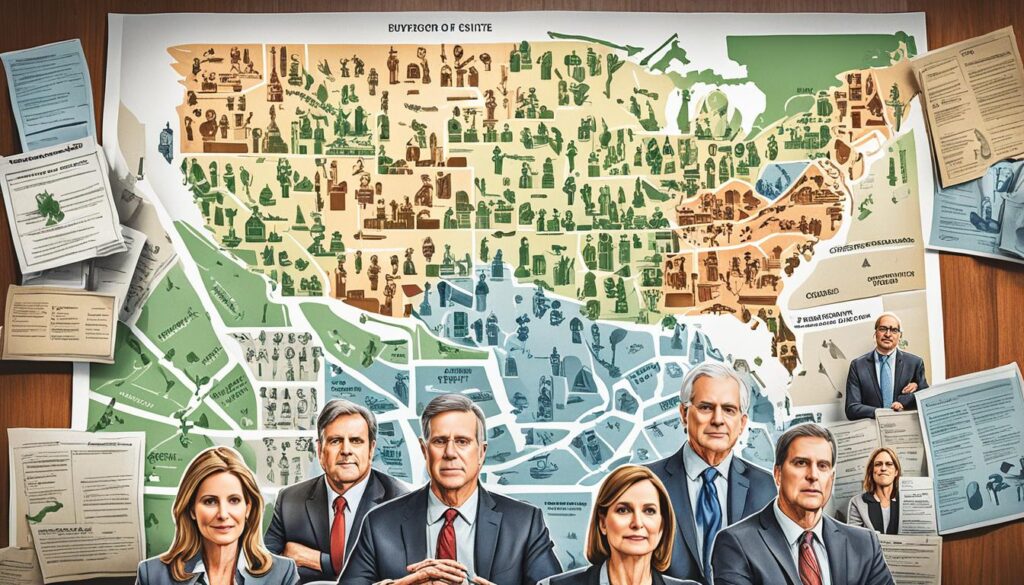
Alternative Dispute Resolution Methods
In the United States, settling legal disputes through the traditional court system is common. However, more people are turning to alternative dispute resolution (ADR) methods.8 Negotiation is often the first step to resolve conflicts. It is used in about 90-95% of cases, showing it’s very effective.
Mediation
Mediation involves a neutral person helping parties negotiate. Its goal is for these parties to agree on a solution that satisfies everyone.8 People find mediation useful in various situations, from serious crimes involving young people to financial disagreements.
Arbitration
8 Arbitration is becoming more popular as a way to solve disputes. It has many forms, including local and global. Almost all states in the U.S. and many countries support arbitration.8 Thanks to agreements like the New York Convention, countries make it easier to use arbitration for solving international problems.
Mediation and arbitration have benefits over going to court. These include saving money, being more flexible, and getting solutions faster. They are often used in cases related to business, work, or family to avoid long court processes.
https://www.youtube.com/watch?v=DnLWPXFh6Ys
Impact of Technology on the Judicial System
Technology is changing the American judicial system. It’s making legal processes easier and courts more efficient. 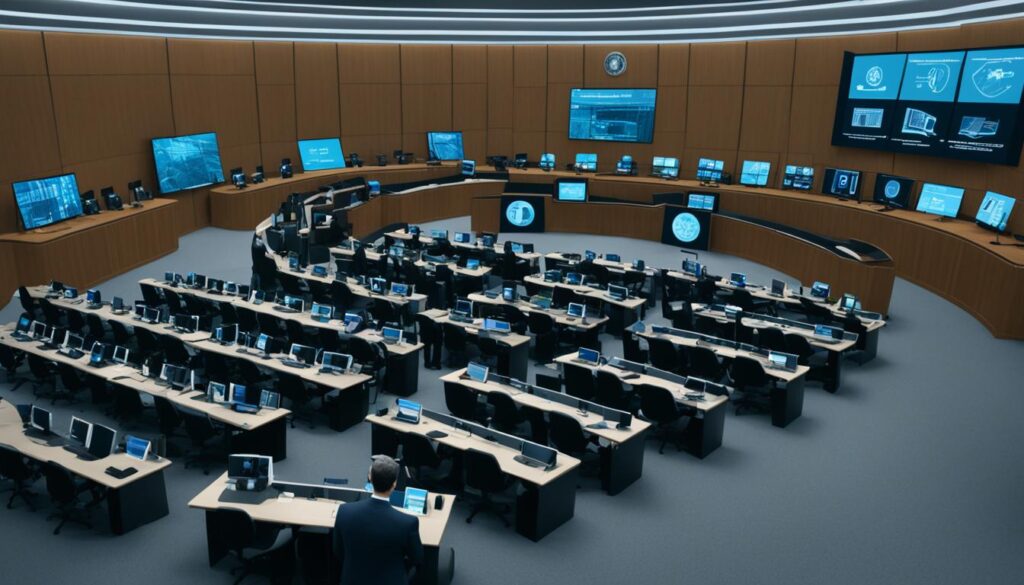 Digital courtrooms now use tools like evidence systems and video calls. This makes court operations smoother and more accessible.9 The pandemic has speeded up the use of online court sessions. Now, virtual hearings and meetings are common.9
Digital courtrooms now use tools like evidence systems and video calls. This makes court operations smoother and more accessible.9 The pandemic has speeded up the use of online court sessions. Now, virtual hearings and meetings are common.9
Platforms for solving legal disputes online have also appeared. These use safe digital methods.9 This technology can make legal processes faster and clearer. But, it also brings up issues like keeping data secure and making sure everyone can access justice equally.9
Technology is becoming key in the legal system’s future.910 After March 2020, every state began holding online court hearings. Texas alone managed 1.1 million online hearings for various cases. They did this from March 2020 to February 2021.10 Michigan held over 35,000 video hearings in two months. This was a big increase from the year before, showing how much things have changed.10
Before the pandemic, many places allowed people to file court papers online for some cases.10 Since March 2020, another 10 states have started this process.10 Many places also made it easier to get documents notarized online. This helped people move their cases forward without in-person contact.10 For example, Arizona saw fewer cases decided without one side there. This change happened after they made updates for better technology.10
But, using technology in courts has been hard at times.10 Many orders related to the pandemic didn’t mention how to help those with disabilities or who don’t speak English well.10 Top legal groups now recommend that courts think about fairness, clear process, and equal access when they use new tech.10
| Key Impacts of Technology in the Judicial System | Statistics |
|---|---|
| Rapid adoption of video technology in justice systems worldwide | 9 |
| Approximately one-third of the normal throughput of court cases being handled in crisis-affected justice systems | 9 |
| Only 46% of people globally under the protection of the law | 9 |
| Significant backlog of cases due to court closures during the pandemic | 9 |
| Increased participation in civil court proceedings after implementing technological improvements | 10 |
| Lack of technology accommodations for individuals with disabilities and limited English proficiency | 10 |
Judicial Ethics and Accountability
In the American judicial system, judges must meet high ethical standards. They do this to uphold the legal system’s integrity and fairness. Both federal and state rules set out the do’s and don’ts for judges. These include being fair, staying independent, working hard, and avoiding shady personal or financial ties.
Breaking these rules can lead to serious consequences. Judges might even be kicked out if they don’t follow the ethical codes. And yes, the public keeps a close eye on judges, making sure they are doing right. Federal judges might face the impeachment process, while state judges have to impress voters or those in charge of reappointing them.11
The United States Judicial Conference plays a significant role in guiding judges. They offer advice in the form of Advisory Opinions to address ethical dilemmas. Moreover, this body makes rules about gifts, sources of earnings, and reporting on finances. This is to make sure the judiciary operates with fairness and honesty.11
Keeping a strong ethical and accountable judicial system is vital for the public to trust it. The Code of Conduct for United States Judges, made in 1973, is a key reference for ethical behavior among federal judges. It gets updated often to make sure judges act with impartiality and independence. This helps make justice fair for all.12
FAQ
What is the structure of the federal court system?
How are the state court systems structured?
What is the difference between federal and state court jurisdictions?
What are the roles and responsibilities of judges in the American judicial system?
How does the jury selection process work, and what are the duties of juries?
What are the key differences between the civil and criminal litigation processes?
What specialized courts and tribunals exist within the American judicial system?
How have advancements in technology impacted the American judicial system?
What ethical standards and accountability measures are in place for judges in the American judicial system?
Source Links
- https://www.uscourts.gov/about-federal-courts/court-role-and-structure
- https://www.justice.gov/usao/justice-101/federal-courts
- https://www.lexisnexis.com/en-us/lawschool/pre-law/intro-to-american-legal-system.page
- https://www.uscourts.gov/about-federal-courts/court-role-and-structure/comparing-federal-state-courts
- https://workforce.com/news/jury-duty-laws-by-state
- https://www.utcourts.gov/en/about/courts/dist/jury/sel-serve.html
- https://supremecourt.flcourts.gov/About-the-Court/Florida-s-Court-System
- https://www.law.cornell.edu/wex/alternative_dispute_resolution
- https://clp.law.harvard.edu/article/the-future-of-courts/
- https://www.pewtrusts.org/en/research-and-analysis/reports/2021/12/how-courts-embraced-technology-met-the-pandemic-challenge-and-revolutionized-their-operations
- https://www.uscourts.gov/rules-policies/judiciary-policies/ethics-policies
- https://www.uscourts.gov/judges-judgeships/code-conduct-united-states-judges
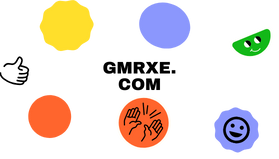 Gmrxe Entertainment and Information
Gmrxe Entertainment and Information

